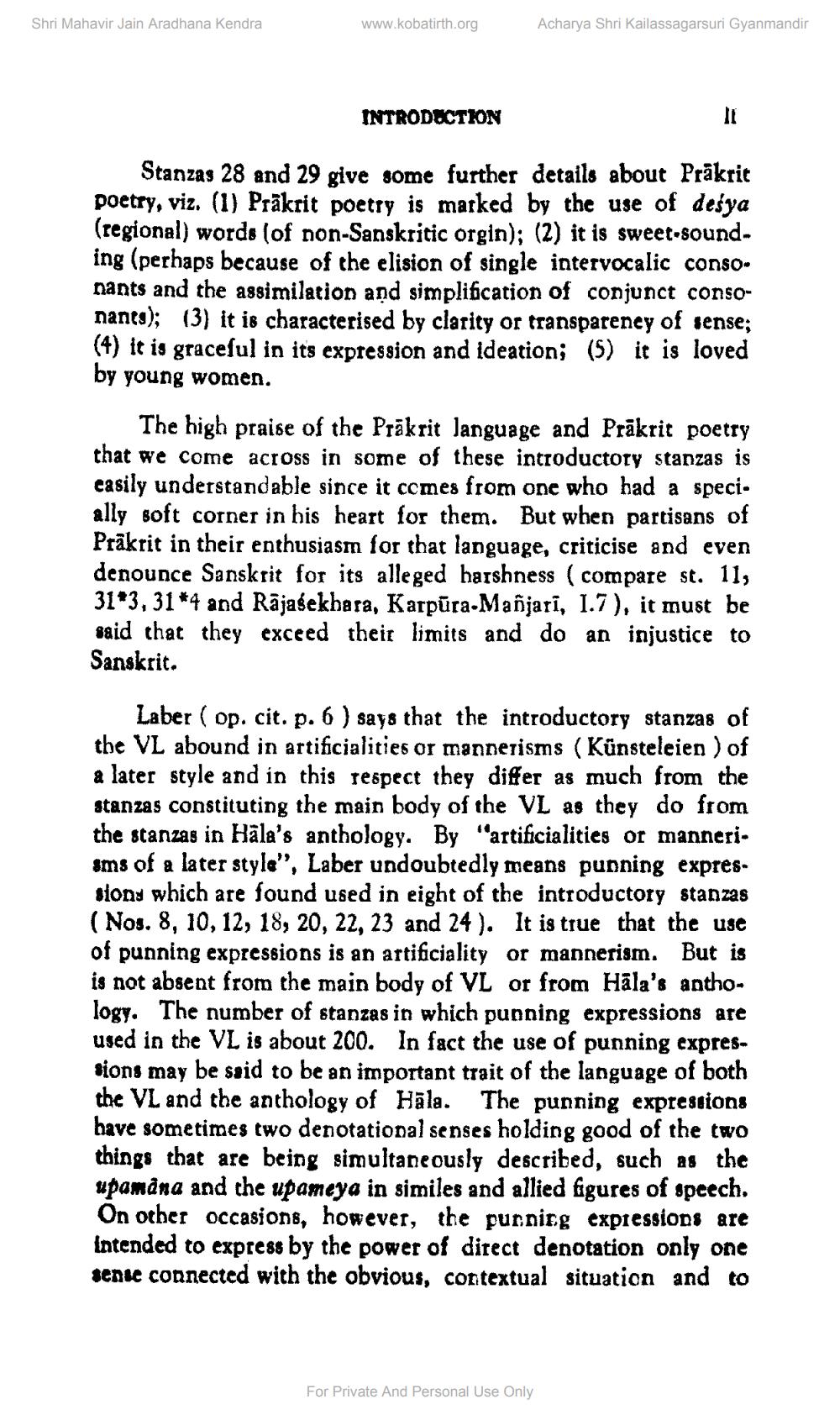________________
Shri Mahavir Jain Aradhana Kendra
www.kobatirth.org
Acharya Shri Kailassagarsuri Gyanmandir
INTRODUCTION
Stanzas 28 and 29 give some further details about Prākrit poetry, viz. (1) Prākrit poetry is marked by the use of desya (regional) words (of non-Sanskritic orgin); (2) it is sweet.sounding (perhaps because of the elision of single intervocalic conso. nants and the assimilation and simplification of conjunct consonants); (3) it is characterised by clarity or transparency of sense; (4) it is graceful in its expression and ideation; (5) it is loved by young women.
The high praise of the Prākrit language and Prākrit poetry that we come across in some of these introductory stanzas is casily understandable since it comes from one who had a speci. ally soft corner in his heart for them. But when partisans of Prākrit in their enthusiasm for that language, criticise and even denounce Sanskrit for its alleged harshness (compare st. 11, 31*3, 31 *4 and Rājasekhara, Karpūra-Mañjarī, 1.7), it must be said that they exceed their limits and do an injustice to Sanskrit.
Laber ( op. cit. p. 6 ) says that the introductory stanzas of the VL abound in artificialities or mannerisms ( Künsteleien ) of a later style and in this respect they differ as much from the stanzas constituting the main body of the VL as they do from the stanzas in Hāla's anthology. By "artificialities or manneri. sms of a later style", Laber undoubtedly means punning expressions which are found used in eight of the introductory stanzas (Nos. 8, 10, 12, 18, 20, 22, 23 and 24 ). It is true that the use of punning expressions is an artificiality or mannerism. But is is not absent from the main body of VL or from Hāla's anthology. The number of stanzas in which punning expressions are used in the VL is about 200. In fact the use of punning expressions may be said to be an important trait of the language of both the VL and the anthology of Hāla. The punning expressions have sometimes two denotational senses holding good of the two things that are being simultaneously described, such as the upamana and the upameya in similes and allied figures of speech. On ocher occasions, however, the purnirg expressions are intended to express by the power of direct denotation only one sense connected with the obvious, contextual situation and to
For Private And Personal Use Only




